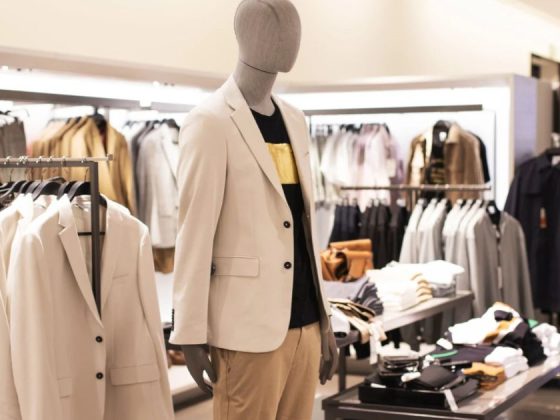In today’s world, where first impressions often carry more weight than we realize, the importance of personal appearance, specifically how we dress, has evolved from being a superficial concern to one that impacts our confidence, mindset, and even performance. Clothing has a deeper influence on us than we might think, and research has increasingly pointed to the science behind how what we wear shapes our behavior, interactions, and emotions.
In 2025, the understanding of clothing’s psychological impact has reached new heights, thanks to advancements in psychology, neuroscience, and fashion technology. Let’s explore how clothing affects confidence and mindset, backed by scientific evidence, and why dressing well is more than just a matter of style.
1. The Psychology of Clothing
- Enclothed Cognition:
- A key concept that has gained traction in the past decade is “enclothed cognition,” which refers to the psychological impact of clothing on the wearer’s mental state and performance.
- The term was first coined by researchers at Northwestern University, and it shows that wearing certain clothes can positively influence a person’s cognitive abilities and behavior.
- For instance, wearing a suit can make someone feel more powerful, focused, and confident. It triggers mental associations with professionalism and success.
- The Power of Symbols and Identity:
- Clothes serve as a visual representation of our identity, and how we dress can convey messages about our social status, aspirations, and personality.
- Fashion has the ability to communicate non-verbal cues that affect how others perceive us. This has a profound impact on how we view ourselves and our self-esteem.
- When we dress in a way that aligns with our values or goals, we feel more authentic, boosting our internal sense of confidence.
- The Role of Social Expectations:
- Society has ingrained certain expectations about how we should dress for various occasions, and dressing according to these norms can enhance our sense of belonging and self-assurance.
- Conversely, failing to meet these expectations (e.g., dressing too casually for a business meeting) can lead to feelings of inadequacy and insecurity.
2. Dressing for Success
- Boosting Cognitive Function:
- Studies show that dressing in formal clothing can improve focus and analytical thinking. This is because formal attire makes people feel more competent and increases their sense of self-control.
- In 2025, neuroscientific advancements have shown that clothing affects brain activity. Wearing professional or high-status clothing activates areas of the brain linked to abstract thinking and decision-making, helping individuals perform better in high-pressure situations.
- The Impact on Leadership and Authority:
- Leaders and high-powered professionals often dress in a manner that conveys power, authority, and control. This not only affects how others perceive them but also shapes their own mindset and behavior.
- In leadership roles, people who dress the part are more likely to be taken seriously, and they also tend to adopt a more confident and assertive demeanor.
- The Role of Comfort and Fit:
- While professional attire is often associated with formal wear, there is growing recognition of the importance of comfort in clothing choices. In 2025, comfort does not mean sacrificing style, but rather finding a balance between looking sharp and feeling at ease.
- Ill-fitting clothing can cause discomfort and distract the wearer, leading to diminished confidence and focus. Well-fitted clothing, on the other hand, can enhance one’s posture and overall well-being.
- Dressing for the Job You Want:
- “Dress for the job you want, not the job you have” is a popular saying in the professional world. Scientific studies support this idea by showing that dressing in a manner that reflects your aspirations can boost your chances of success.
- People who dress with intention, adopting attire that represents the position they aspire to, often experience a sense of empowerment that translates into improved performance.
3. Clothing and Self-Confidence
- The Confidence-Boosting Effects of Clothes:
- Clothes have the power to change our mood and self-esteem. The right outfit can help you feel more confident, whereas the wrong one can make you feel insecure or inadequate.
- Research shows that people are more likely to feel positive about themselves when they wear clothing that makes them feel attractive or well-dressed. This boosts confidence, which can then translate into more positive social interactions.
- Color Psychology:
- Color plays a major role in how we feel about ourselves and how others perceive us. For example, wearing blue can evoke feelings of calm and trustworthiness, while red can signal power and passion.
- In 2025, the science of color psychology is being used not only in fashion but also in personal branding. People are more mindful of how colors affect their emotions and the messages they send to others.
- The Impact of Clothing on Social Perception:
- The way we dress can heavily influence how others perceive us. In turn, these perceptions can affect our confidence. For example, dressing in a professional or attractive manner can increase your likelihood of being treated with respect.
- When we feel that we are being viewed positively, it reinforces our self-worth, fostering further confidence.
- Personal Style and Authenticity:
- Personal style is about more than following trends; it’s about expressing your true self. In 2025, there is a growing movement towards sustainable fashion and dressing in a way that aligns with personal values.
- People who dress authentically are more likely to feel confident because they are not trying to conform to others’ expectations. Their clothing choices align with their personal identity, which fosters greater mental clarity and a positive self-image.
4. Clothing and Mood Regulation
- The Science Behind Fashion and Emotions:
- Neuroscientific studies show that the brain responds to clothing similarly to how it responds to other sensory stimuli, such as taste and touch. Clothing can evoke specific emotions depending on the style, fabric, and fit.
- For example, soft, comfortable fabrics like cashmere or cotton can make us feel relaxed and cozy, while structured fabrics like wool or linen can convey a sense of order and professionalism.
- How Clothing Affects Stress and Anxiety:
- The clothes we wear can either exacerbate or reduce stress. Tight, restrictive clothing can contribute to feelings of discomfort, whereas loose, well-fitting clothing can enhance relaxation and reduce anxiety.
- In high-stress situations (such as interviews or public speaking), wearing clothing that you feel comfortable and confident in can help reduce performance anxiety and foster a calm, composed mindset.
- Fashion as a Mood Enhancer:
- Wearing bright or vibrant colors can serve as a mood booster. Research shows that certain colors, such as yellow, green, or orange, have a positive effect on our emotions and can increase feelings of happiness and optimism.
- In contrast, wearing dark or neutral tones might make someone feel more subdued or serious. People can use clothing intentionally to match or alter their mood.
- Seasonal Clothing and Mental Health:
- The seasonality of clothing also has a profound effect on mental health. In the colder months, heavier clothing might create a sense of comfort and security, while lighter clothes in warmer seasons might evoke feelings of freedom and vitality.
- The seasonal transition in fashion has psychological implications, which can affect one’s mood and mental well-being.
5. The Future of Fashion
- Smart Clothing and Wearable Technology:
- The future of fashion is rapidly becoming intertwined with technology. In 2025, wearable tech such as smart fabrics and clothing that adjusts to the wearer’s body temperature is becoming increasingly popular.
- These garments can boost comfort, making people feel more at ease in their clothes. Additionally, some smart clothes are designed to monitor physical health and provide feedback, enhancing both mental and physical well-being.
- Sustainable Fashion and Environmental Impact:
- Sustainability is a major trend in the fashion world. Clothes made from sustainable materials are not only better for the planet but also contribute to the wearer’s sense of pride and confidence.
- The act of choosing environmentally responsible clothing can enhance one’s sense of purpose and mental satisfaction, as it aligns with values of social responsibility.
- Customized Fashion Experiences:
- In 2025, artificial intelligence (AI) and augmented reality (AR) are enabling personalized fashion experiences. Virtual fitting rooms allow people to try on clothes digitally, while AI algorithms suggest outfits based on a person’s preferences, body type, and lifestyle.
- These technologies reduce the stress of shopping and help people feel more confident about their clothing choices, enhancing both their self-esteem and their overall mindset.
How Dressing Well Shapes Mindset and Success
Dressing well in 2025 is about more than just keeping up with trends; it’s about harnessing the powerful psychological and emotional effects that clothing has on our minds. As science continues to unravel the profound ways in which clothing influences our mindset, confidence, and performance, it’s clear that the act of dressing is a tool for self-expression, empowerment, and personal growth.
Whether through the psychological effects of professional attire, the mood-boosting benefits of color and fabric, or the emerging technologies that enable more personalized fashion choices, the science of dressing well is evolving. Embracing this understanding not only helps us look better but also feel better, perform better, and connect with others more authentically.
In 2025, dressing well is not merely a matter of looking good — it’s about feeling good, thinking better, and cultivating a mindset that propels us toward success.



